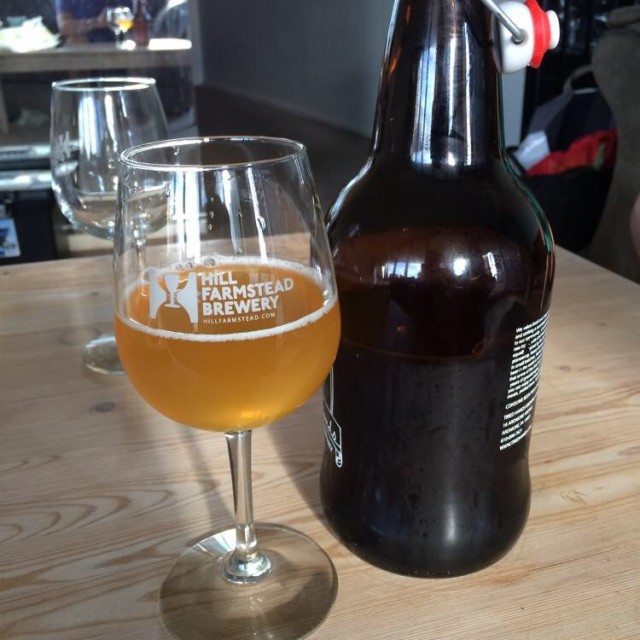This was a portion of the second iteration of Namur, which is a rotating mix of blonde saisons. While most of the Namur batches are clean, I've done a few variants that take things in different directions. This one is included, as here I added the juice and zest of Satsuma mandarins, and used a blend of Wyeast Biere de Garde (WY3725), Crooked Stave, and miscellaneous saison dregs.
I have delayed getting these tasting notes done until now, as I previously thought that the Satsuma was too strong. Based on that, in the future I'd plan to use 25-33% less juice, though probably about the same amount of zest. Based on my experience working with citrus in saisons, the juice comes through and is a lot more pungent in small doses compared against zest, where it's mostly aroma without an excessive amount of flavor contribution either way. Side note: The Meyer Lemon portion is still excessively lemon-y to my palate at this point, so I'm waiting for that to subside a bit, though in the interim I may use it as a blending component to brighten up a base.
Appearance: Gusher! Light peach color with residual haziness. Good retention, although not a great deal of lacing as it goes down. Based on the aforementioned gusher status, not sure if the retention is related to sediment being kicked up, or instead the fruit content of this beer.
Nose: Heavy on the Satsuma character even though this beer was brewed over six months ago at this point. A bit one dimensional, but the character is something quite nice on a hot summer day like this. A bit of backing funk.
Flavor: Starts out with a nice orange zest character and light backing acidity. Touch of bitterness on the backend. Orange really carries everything through here, and is not so much an accent as it is the dominant character of the beer. Could use a bit more backing yeast character and/or funk. Oak could work too. It's enjoyable as it is, though could use a bit more depth.
Mouthfeel: Light and crisp, slightly puckering. Fairly-heavy carbonation level despite the initial gushing. Dry and thirst-quenching. The acidity is certainly fruit-derived, but is at a really nice level.
Overall: It's a one-dimensional beer, but that's not the worst thing in the world for a summer slammer. The next time I do this, I'll certainly make sure to do something a bit different with at least half the batch, whether it's aging on oak for a bit more depth and mouthfeel and/or blending with something that's a little more earthy and funky.




